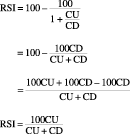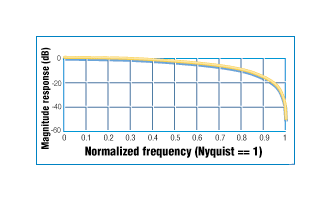INDICATORS
Reduce Those Lags
The RSI Smoothed
by John F. Ehlers
Here's how you can enhance the performance of the RSI.
Smoothing an indicator usually means a tradeoff between the amount of smoothing you desire and the amount of lag you can stand. In this article I will show you how the relative strength index (RSI), an indicator developed by J. Welles Wilder, can be smoothed and enhanced with a minimum of lag penalty.
RSI DEFINED
J. Welles Wilder defined the RSI as
RSI = 100 - [100 / (1 + RS)] where RS = (closes up) / (closes down) or = CU / CD
RS is shorthand for relative strength. CU is the sum of the difference in closing prices over the observation period where that difference is positive. Similarly, CD is the sum of the difference in closing prices during the observation period where that difference is negative, but the sum is expressed as a positive number. When you substitute CU/CD for RS and simplify the RSI equation, you get:

In other words, the RSI is the percentage of the sum of the delta closes up to the sum of all the delta closes over the observation period. The only variable is the observation period. For maximum effectiveness, the observation period should be half of the measured dominant cycle length.

FIGURE 1: FREQUENCY RESPONSE OF A TWO-BAR SMA. A two-bar simple moving average removes the two-bar cycle component (cycle = 2 / normalized frequency).
...Continued in the October 2002 issue of Technical Analysis of STOCKS
& COMMODITIES
Excerpted from an article originally published in the October 2002 issue of Technical Analysis of STOCKS & COMMODITIES magazine. All rights reserved. © Copyright 2002, Technical Analysis, Inc.